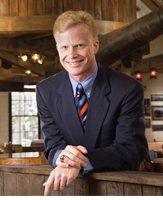Smith Lilly
Princeton, WV

Known and respected by his peers as a versatile and thorough horseman, Smith Lilly brings many years of experience training show horses to the pages of Saddle Seat Horsemanship, the most comprehensive and detailed study available on the subject. After developing his skills working under the direction of noted horsemen Larry Barbee, Mitch Clark, Nelson Green and Fred Sarver, Lilly returned to his family’s Mercer Springs Farm, which he operates along with his wife, Alexandra and mother, Sandy, as a public training stable specializing in American Saddlebreds.
From their base in Princeton, WV, the Lillys have trained crowd pleasing world champions in all divisions, including in-hand, junior and amateur riders, young horses and open grand champions. In all, they have amassed over 100 world and reserve world titles, including World's Grand Championships in the Five-Gaited (He's The Man) and Fine Harness (Mother Mary) divisions. While Saddlebreds are their specialty, the Lillys have experience working with many breeds, including Morgans, Arabians, Hackneys, Friesians, National Show Horses and Standardbreds.
Smith Lilly also has a history of giving back to the sport. He is a strong supporter of the United Professional Horsemen’s Association (UPHA), and is past chapter chairman for UPHA Chapter 18. Having served in various volunteer capacities for the American Saddlebred Horse Association (ASHA), he is currently chair of the KY and National Futurities Committee. In turn, Lilly was recognized by the ASHA with the prestigious C.J. Cronan Sportsmanship award in 2002, and by the UPHA with the very first Tony Ray Young Professional Of The Year award for 2004. Additionally, Lilly has served on the USEF (U.S. Equestrian Federation) Rules Committee for the Saddlebred division since 2005.
On writing a book about Saddle Seat riding and training, Lilly says, “When I decided to make training show horses my life’s work, I wanted to learn as much as possible about the horse. While many books were available discussing training theories for other disciplines, precious little written information was available about show horses. Information on the topic was shared the truly old fashioned way, in discussions among horsemen, with young trainers learning from the master horsemen under whose tutelage they worked. I am indebted and eternally grateful to the men and women who have shared their knowledge of the show horse with me and hope that making this information more readily accessible serves to broaden the popularity of the sport. The majesty of the horse, fully on display in show ring competition, is truly a stirring sight worth sharing with others.”